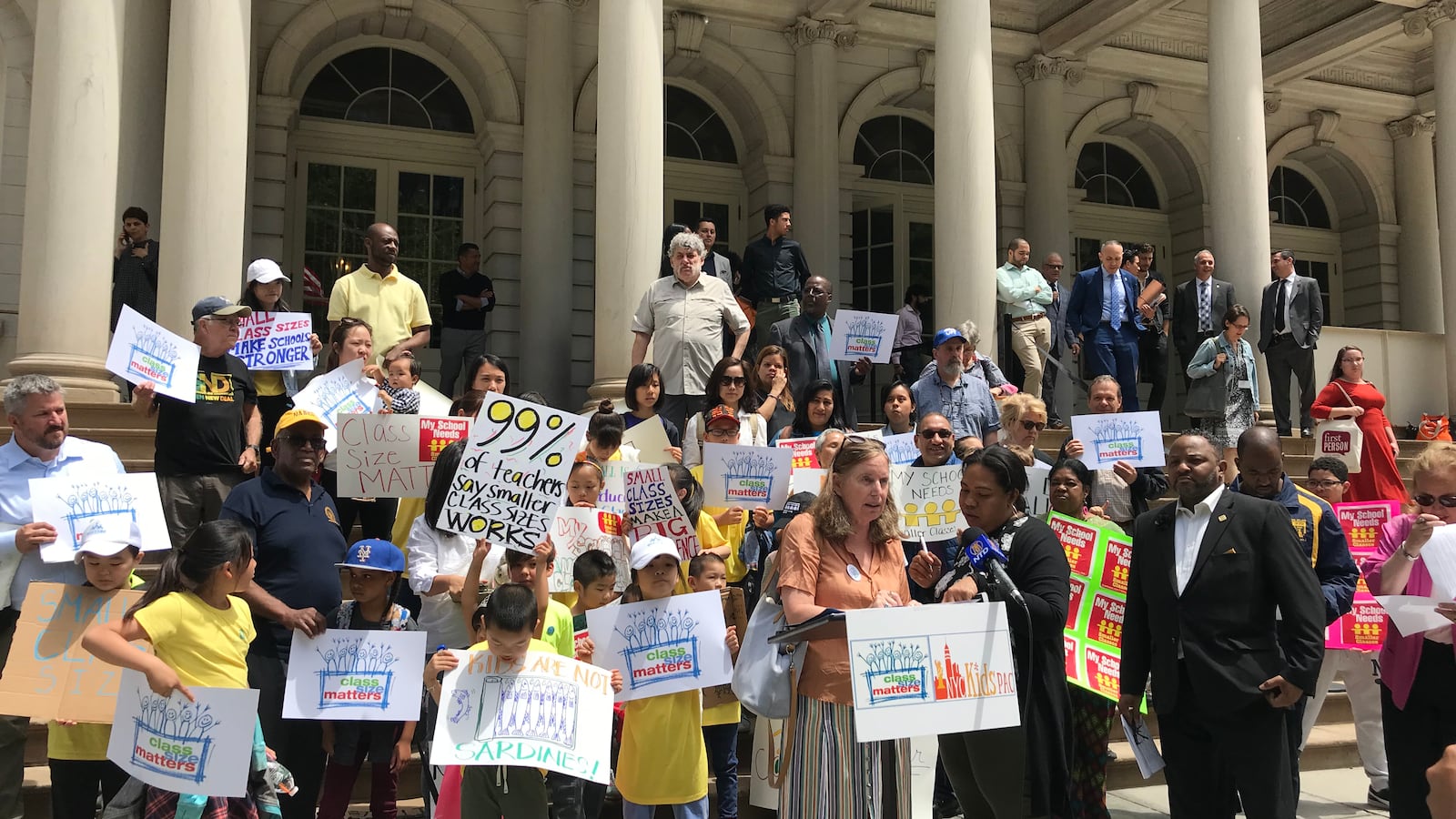Dozens of parents, students, and advocates were joined by elected officials on the steps of City Hall to rally for smaller class sizes in the city. The protesters said they hoped to urge Mayor Bill de Blasio and other lawmakers to allocate specific funding to reduce class size in next year’s budget, which is expected to be finalized soon.
The mayor and the Department of Education have prioritized education policies like universal pre-K and integration, but protesters said the problem of overcrowding has fallen to the wayside.
“Classes this large are neither equitable nor excellent, especially as studies show that students of color gain twice the benefit when class sizes are reduced,” said Leonie Haimson, executive director of Class Size Matters.
City councilman Mark Treyger spoke at the rally and referenced Monday’s announcement that the mayor would endorse 62 recommendations from the city’s School Diversity Advisory Group. “Yesterday we had a very important announcement at Tweed about taking steps toward meaningful integration in our school system, but one of the most effective and greatest equalizers is the reduction of classes,” he said.
Following a ruling by the state’s highest court in 2003, which found that class size was a component of a “sound basic education,” the city was required to set specific class size reduction targets by the 2011-2012. But years later, a report found that not only had the targets not been met, but in some schools, overcrowding had gotten worse. In 2016, more than 800,000 students were enrolled in schools where the average class size had surpassed the limits set by the city, according to the report. Advocates say the problem is only worsening.
In February, the United Federation of Teachers filed a public complaint against overcrowding at five schools the union says have classes with as many 38 students. The average class size for all city schools is 26.3, compared to 26.4 in the 2014-15 school year, according to the Department of Education.
Lina Rosario, a sixth grader at MS 839, says she is one of 33 students in her class. Rosario, who spoke at the rally, said her grades suffer because of her class size.
“Sometimes my teacher can’t even get to every student in the class when they need help,” she said. “Our mayor has to know that us students are struggling in math and most classes that matter because we don’t get enough help due to all the students in our class.”
Research suggests that reducing class sizes may encourage integration and contributes to improvements in student performance, but it can also come at a cost: hiring more teachers is expensive. And in New York City, those that have been brought in to address overcrowding are typically less effective, according to a study by Michael Gilraine, a professor at New York University.
The city defended itself against the claims, saying officials have made “significant investments to reduce overcrowding and support smaller class sizes,” said Doug Cohen, a spokesman for the city Department of Education. Cohen cited the department’s new $17 billion Capital Plan, which he said will fund 57,000 new seats and allocate $150 million to support specific class size-reduction initiatives.
“We’ll continue to build on these investments and work with school communities to meet their needs,” Cohen said.
Despite this, Maria Bautista, the campaign director of the Alliance for Quality Education, said that lawmakers haven’t shown that overcrowding is a priority for them. Bautista said when she visits schools with majority black and Latino students, class sizes are almost always over capacity.
“It’s not just that the classes are huge,” she said. “It’s that each one of the class sizes have tremendous high need. We’re talking about poverty compounded by English language learners and special needs students.”
Budget negotiations for the upcoming fiscal year are ongoing, but the education department has been asked to cut $104 million from its budget. Chancellor Richard Carranza has said that “everything is on the table.” A final budget is expected by the end of the month.

